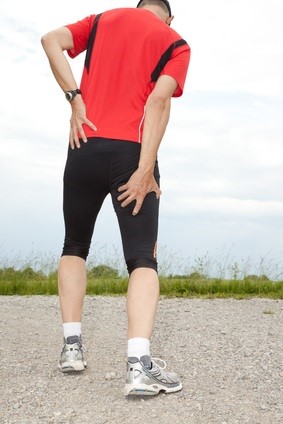
The Facts about Hamstring Injuries – Causes and Prevention
Hamstring injuries are a very common type of sports injury. If you are suffering from a hamstring injury, it can be very frustrating, since hamstring injuries may take a considerable amount of time to fully heal.
Hamstring injuries also tend to be quite painful. Many people suffering from a hamstring injury experience a stabbing pain in the back of their leg, especially during participation in athletic activity.
The hamstring is comprised of three muscles, referred to as the biceps femoris, the semitendinosus and the semimembranosus. When you experience a hamstring injury, you have an injury to one or more of these muscles. The muscles that make up the hamstring are an important part of enabling you to bend your knee and stretch your leg out behind you. Your hamstring is also important when you are jumping or sprinting.
Hamstring injuries vary in intensity. Sometimes people are able to continue activity with a minor hamstring injury whereas more severe injuries may make participation impossible.
If you go to your doctor for a hamstring injury, your injury will be evaluated based on various grades of severity. The most minor type of hamstring injury, a grade 1 hamstring injury, is sometimes referred to as a hamstring pull. With a grade 1 hamstring injury, you will probably feel pain in the back of your leg, especially when you are running or jumping, but you will still be able to walk.
A grade 2 hamstring injury is more serious. If you are suffering from a grade 2 hamstring injury, you might limp while walking. You are also likely to feel an intense pain in the back of your leg during physical activity. You may also experience swelling.
In the most severe cases of hamstring injury, a grade 3 hamstring strain, you may have a tear in your muscle. These types of hamstring injuries are marked by very severe pain, swelling, and difficulty walking. It is likely that you will have to use crutches if you experience a grade 3 hamstring injury.
Many different factors can lead to a hamstring injury and once you experience a hamstring injury the rates of reinjury are estimated to be quite high. Estimates about re-injury rates for hamstring injuries range from around 12% to upwards of 30% or higher.
Regardless of the grade of your hamstring injury, rest is typically an important part of healing from a hamstring injury. Elevation, compression and ice are also often recommended for those suffering from a hamstring injury.
Researchers have identified certain factors that are connected to hamstring injury. Risk factors for hamstring injury identified in research by Hölmich noted the following five issues: tightness in hamstrings, not enough warm up time before physical activity, past injuries, tired muscles, and imbalance in muscular strength between the hamstring muscles and the quadriceps.
If you are interested in learning more about some of the causes of hamstring injuries, here 7 factors to take into consideration.
- Stiff hamstring muscles – if you do not stretch regularly, especially if you are involved in athletic activities, you may find that your hamstrings are sore. This muscle group is very susceptible to damage if too tight.
- Muscle fatigue – if you are overtraining and have pushed your body too far, you might find that you suffer from some type of hamstring injury. when muscles get tired, they are more prone to injury.
- Muscular imbalance – if you have some muscles that are most more conditioned than others, it can lead to injury. Often people have more developed quadriceps on the front of their legs and weaker hamstring muscles. The imbalance between these two important muscle groups may cause damage. To read more about this, check out research by Croisier (2008) and colleagues examining strength imbalances and the prevention of hamstring injury among pro soccer players.
- Your age – younger people are more likely to experience hamstring injuries because their bodies are still developing and muscles do not grow at the same speed as bones. If a person is experiencing a growth sport, their bones may grow a lot quicker than their muscles. This may make their muscles more vulnerable to tearing.
- Certain sports and activities – if you participate in physical activities and sports that demand a lot of running, sprinting and jumping, you may be more likely to experience a hamstring injury. Activities like running, soccer, football, basketball, and dancing are all activities that may lead to hamstring injuries.
- Not enough warm-up – if you are participating in sports or physical activities that require a considerable amount of sprinting and/or jumping, and you do not spend time warming up your muscles, and easing into physical activity, you may be more likely to experience hamstring strain.
- Previous hamstring injuries – hamstring injuries may be recurring and the rates of re-injury can be high, especially for those involved in specific sports like for example football or soccer.
If you think you have an injured hamstring, it is advisable that you consult a qualified medical professional like a board certified orthopaedic surgeon like Dr. Stacie Grossfeld for a thorough evaluation and diagnosis. As with most sports injuries, if left untreated, hamstring injuries can become increasingly severe, requiring more time away from activity in order to heal.

Leave a Reply
You must be logged in to post a comment.